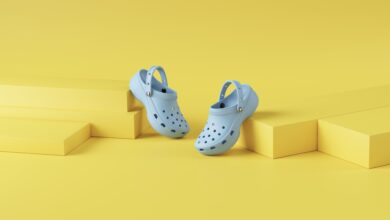The New Rolls-Royce Ghost Is Here
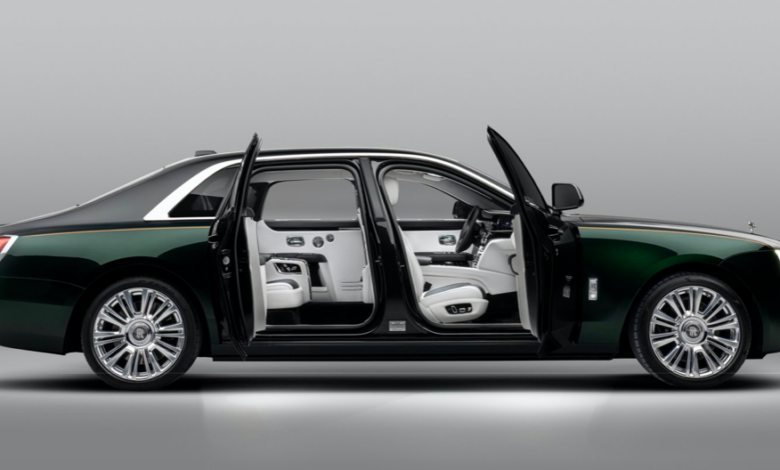
New Ghost is perfect in its simplicity, but creating this pure and detoxifying environment was one of the greatest challenges in the marque’s history. Indeed, new Ghost is the most technologically advanced motor car Rolls-Royce has ever produced. Further equipment includes: LED and laser headlights with more than 600m of illuminated range, vision assist, including day- and night-time wildlife and pedestrian warning; alertness assistant; a four-camera system with panoramic view, all-round visibility and helicopter view; active cruise control; collision warning; cross-traffic warning; lane departure and lane change warning; an industry-leading 7×3 high-resolution head-up display; Wi-Fi hotspot; self-park; and the very latest navigation and entertainment systems.
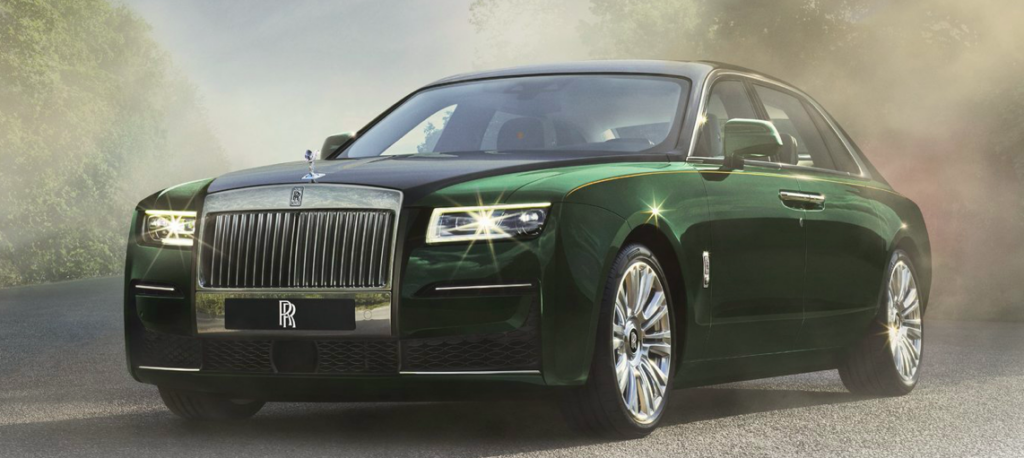
Ghost clients operate in complicated business worlds. From the moment they step into the interior suite of their Rolls-Royce, it is essential that they are imbued with a sense of wellness. Visually, this is the result of an obsessive approach to reduction and unwavering dedication to material quality and substance. Experientially, however, this is achieved through peerless chassis and drivetrain engineering, as well as an unrelenting approach to creating a serene acoustic ambience within the interior suite. Rolls-Royce acoustic engineers are experts in serenity.
For new Ghost, it was decided that this expertise would be formalised and the marque’s specialists would create a Formula for Serenity that could help inform future products.
The first element of this formula is the Rolls-Royce spaceframe architecture. Its aluminium construction has a higher acoustic impedance compared to steel. Additionally, it is constructed from complex forms, rather than flat, resonant surfaces. Both the bulkhead and floor sections are also double-skinned, sandwiching composite damping felts to reduce road noise intruding into the passenger suite. Larger sections of the architecture have also been created with specific access points for the installation of acoustic damping materials – new Ghost uses more than 100kg in total, applied in the doors, roof, between the double-glazed windows, inside the tyres and within nearly all of the architecture itself.
Once a highly insulated sound stage is created, components that generate almost imperceptible sound waves are tracked and modified. These are known by acoustic engineers as ‘hidden inputs’. In the development of new Ghost, every component was interrogated to assess whether it created noises that engineers defined as unacceptable and were completely reengineered as a result. The inside of the air conditioning ducting, for example, created an unacceptable level of wind noise so it was removed and polished to inform the production of the final component. Even drivetrain hardware was adjusted to create new Ghost’s near-silent soundstage – the diameter of the prop shaft was adjusted and its rigidity increased to improve acoustics.
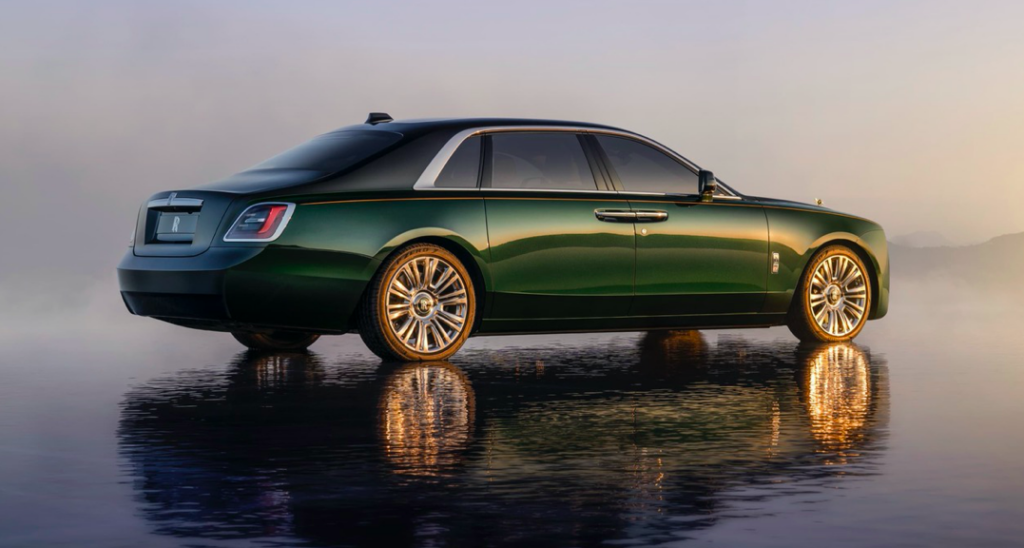
The final element of the formula is harmonising the car. The marque’s acoustic specialists experimented with a completely silent interior suite, but found the experience to be disorientating. To overcome this, they elected to create a ‘whisper’, a soft undertone that is experienced as a single, subtle note.
Since the launch of the first Goodwood Rolls-Royce, great care has been taken to create a distinctive aesthetic universe for each motor car. These unique domains have been created based on the design values to which different layers of Rolls-Royce clients respond. New Ghost reflects an evolved appreciation of luxury, one defined by minimalism and purity, but underpinned by great substance. In the pre-sketch ideation phase of new Ghost’s design development, this treatment was named ‘Post Opulence’ – a movement defined by authenticity of materials rather than overt statement, which had already established roots in architecture, fashion, jewellery and boat design.
Pursuing this minimalist aesthetic for new Ghost was the design team’s absolute objective throughout. The desired treatment was not sterile, but confident in its purity and unmistakeably belonging to a Rolls-Royce. This begins with the car’s first impression. Rolls-Royce’s proprietary architecture allowed the design team to increase the width by 30mm, subtly communicating presence. This is framed by sharp bow lines that intersect with an angular light signature, creating an assertive yet beautiful front end.
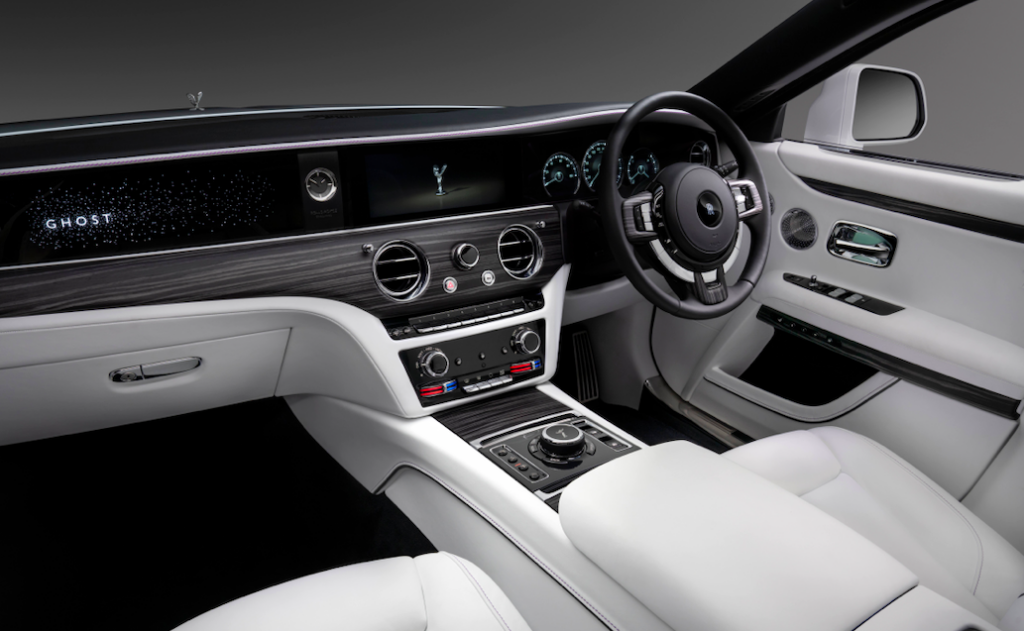
A clear understanding of clients’ changing luxury consumption patterns and a broader view of emerging design movements informed the marque that the interior aesthetic should pursue the same minimalist principles as the exterior. Busy details and superficial embellishments were rejected not only to create a more relaxing refuge, but to better celebrate the material substance and maximise the impact of bespoke colour personalisation.
However, creating an environment defined by reduction, simplicity and elegance is an extremely complex endeavour. It also relies on sourcing the very finest materials; leathers, woods and metals left unembellished will invite the scrutiny of these most discerning of clients. To this end, each of the 20 half hides used to create the interior suite of new Ghost are subject to the automotive industry’s most exhaustive quality control checks to ensure that each of the 338 panels used – however visible – is of the very best quality. Further demonstrating the marque’s competence in leathercraft, complex, busy stitchwork has been eschewed for scant but incredibly long and perfectly straight lines, again welcoming scrutiny from the marque’s clients.
Wood sets for new Ghost are available in an open-pore finish, bravely showcasing materials in their naked form. Indeed, two new finishes have been developed specifically for the motor car. The first is Obsidian Ayous, inspired by the rich versatility of colours found in lava rock. The second is Dark Amber; this introduces subtle glamour to the interior suite by integrating veins of fine aluminium particles into the dark wood. As with the leather finishes, this material is left exposed as long, single-veneer leaves, bisected only by cold-to-the-touch real metal vents, through which MEPS-filtered air reaches the cabin.

